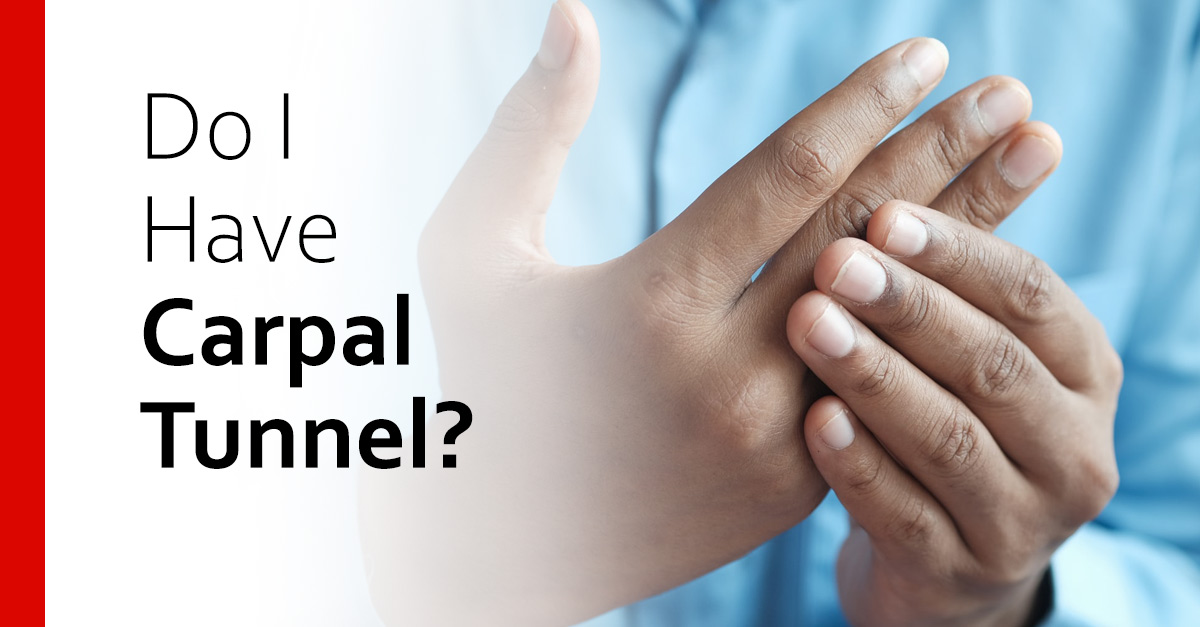Tom spent some time over the weekend working on his car. He changed the oil, rotated the tires, even had time to wax it. “Whew,” Tom exclaimed, “that was a lot of work!” Tom noticed some forearm tightness that night before going to bed, but he didn’t think anything of it.
The next morning when Tom woke up, he wasn’t thinking about his shiny car… he was thinking about how much his hand hurt! “It’s like I have pins and needles in my hand!” he exclaimed.
“But that’s odd,” Tom thought to himself, “my ring finger and pinky finger feel normal.” No matter how hard he shook his hand that day, he couldn’t get his fingers to feel better. “Oh well,” he thought, “it will be better tomorrow.”
The following day, Tom woke up and his hand was worse! He Googled hand numbness and the first few entries that came up were carpal tunnel syndrome, nerve damage and arthritis. “Those sound scary!” Tom thought to himself. “Maybe I should have someone look at my hand.”
Tom Googled “Carpal tunnel treatment Kansas City” and read some of the results. A wrist splint, therapy, and surgery all came up. “I definitely don’t want surgery” he thought to himself. Let’s try something else first. He made an appointment for therapy at a clinic close to him.
At his appointment, the therapist asked to hear Tom’s story. “This all started the day after performing some maintenance and upkeep on my car,” he explained. “It’s not something I do often, and I would like to be able to do it again in the future. But if this pain in my thumb, index finger and middle finger continues, I’m afraid I won’t be able to anymore.”
The therapist calmly smiled and said, “I understand this is new for you, and it may seem like a scary condition. However hand numbness usually has one of several causes, and once we know the cause, we’ll know how to treat it.”
“Once we start treating the hand numbness, how long does it take?” Tom inquired.
“Depending on what we determine is causing your hand numbness, you may start noticing results as soon as today. But sometimes these will take up to 6 weeks to resolve completely.”
“Great!” Tom said. “How do we figure this out?”
The therapist began their exam. They examined Tom’s hand, wrist, forearm, armpit, and finally his neck. “Why are you checking all those places?” Tom inquired.
The therapist explained, “You’re having nerve sensitivity along one of the main nerves in the arm called the median nerve. The median nerve leaves your neck, travels underneath your collar bone, goes underneath your pectoral muscle into your armpit. From there it travels underneath your bicep to your elbow and makes it’s way down the middle of your arm into the middle of your wrist and lower hand. It enters the hand in a small area called the carpal tunnel. Once the median nerve enters the hand through the carpal tunnel, it branches out to your thumb, index finger and your middle finger, and sometimes it can even effect your ring finger as well. Any irritation to the nerve along that entire path from the neck to the fingers can cause the symptoms you are having. The key to treating this hand pain successfully is knowing where the problem is.”
Tom nodded and said, “That makes sense. My forearm was pretty tight after I did all that car work.”
The therapist continued, “Most people would think your hand pain is a condition called carpal tunnel syndrome. However, you actually have a condition known as ‘pronator teres syndrome.’ This syndrome is caused by a big, strong muscle in your forearm that helps you turn your hand down. It is very active when using a wrench, screwdriver, or tire iron.”
“Wait a second,” Tom said, “I used all of those tools the other day!”
The therapist smiled and said, “Yes, and this is the source of your hand pain and numbness. The pronator teres muscle lays over top of the median nerve in the forearm. The extra work temporarily overloaded this muscle and made your median nerve more sensitive though your forearm. This is the cause of what you’re feeling in your hand.”
“But how do we fix it?” Tom asked.
“We fix your pronator teres syndrome with some therapy, some exercise, and some stretches you’ll do at home. You should start to notice a big difference within a day or two. And this may be completely gone within a week.”
“That sounds great! I’m ready to feel better again!” Tom’s therapist stretched out the muscles of his forearm and hand, gave him some exercises to perform at home, and Tom was much better at the end of the week! He was no longer having pain in his fingers, he wasn’t waking up with pain, and he got full use of his hand back. The next time his car needs maintenance, Tom will be ready!

